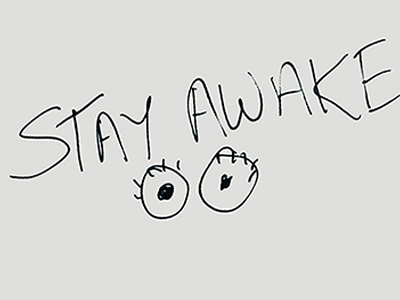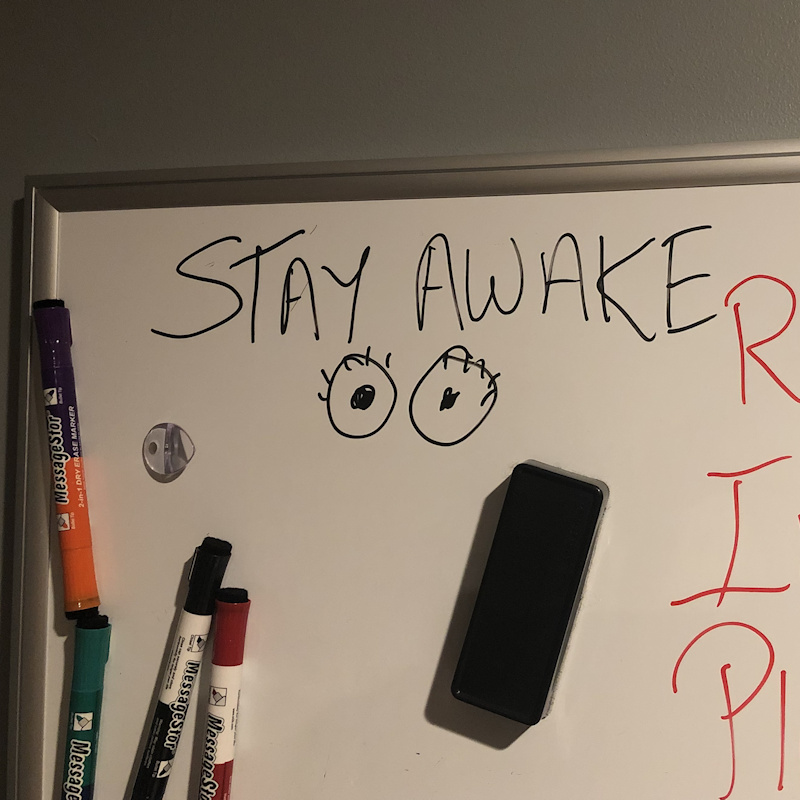
Stay Awake
Reflections on the Equity, Diversity, and Inclusion Workshop
by Jenny Murphy
When I was invited to arrive early to the fall conference and participate in the Equity, Diversity, and Inclusion workshop, I quickly cleared
my schedule to make it happen. I had long been lingering in conversations with numerous communities in my life—from schools to
book clubs to activist groups—about how to make ourselves more diverse to no avail. Kudos to the board for taking on this challenge by inviting the people of the Conciliation Project to teach us exactly how to start talking.
Before the workshop, we received a questionnaire to be submitted in advance and a reading list of four books:
Why Are All the Black Kids Sitting Together in the Cafeteria? And Other Conversations About Race by Beverly Daniel Tatum, Basic Books (1997)
White Like Me: Reflections on Race from a Privileged Son by Tim Wise, Soft Skull Press (2007)
White Fragility: Why It’s So Hard for White People to Talk About Racism by Dr. Robin DiAngelo, Beacon Press (2018)
The Fire Next Time by James Baldwin, Dial Press (1963)
We got started on Thursday morning, right after breakfast. We were an all-white group except for our workshop leaders, Dr. Tawnya Pettiford-Wates (Dr. T) and Ram Bahgat. I wondered if it was appropriate to have this conversation in such a homogenous group, but prepared to keep my mind as open as possible.
We started in a circle, and Ram suggested that when we make our introductions, we include our gender pronouns among other identifiers we prefer. We moved into other activities like describing ourselves as desserts and collaborating on quick poems, raps, and songs to be performed for each other. We walked around, danced to Ram’s drumming, and stopped like musical chairs within small groups to share ideas from various prompts. Later, in breakout groups, we expanded those ideas and wrote them down on large pages of newsprint to display on the walls. Paper plates were distributed for us to divide into individual charts to show our values, and these also went on the walls to remind us how they should be considered in our discussions. Recorded music gave us time to reflect quietly or to sing along. Before we knew it, we were at one long table for lunch.
After lunch, the real work began. Dr. T shared an animated video called The Unequal Opportunity Race, which made the news for being banned by a Virginia high school. The ten-year-old video depicting white privilege was banned not for its message but for making the white students feel “guilty.” Thus began the discussion of white fragility, a term coined by author Robin D’Angelo and defined by her as follows:
White Fragility is a state in which even a minimum amount of racial stress becomes intolerable, triggering a range of defensive moves. These moves include the outward display of emotions such as anger, fear, and guilt, and behaviors such as argumentation, silence, and leaving the stress-inducing situation. (2011)
This was the hardest conversation to have, and after the workshop, I personally felt that white fragility might be our biggest obstacle. If it makes white people feel bad to consider how we benefit from racism, or we believe we have been guilted unfairly, we shut down the conversation. Systemic racism is so embedded in our culture that white people are mostly unaware of our part in it.
I personally felt that white fragility might be our biggest obstacle. If it makes white people feel bad to consider how we benefit from racism, or we believe we have been guilted unfairly, we shut down the conversation.
At the end of our workshop on Friday, we were asked to write actions we would take over the next few days and hang them on a line.
Considering this, I asked out loud: “What do we do now, greet our friends and say, ‘Guess what? I’m a racist and so are you’?”
Learning these lessons had been difficult, but attempting to apply them might prove to be just as hard or harder. I was recalling a painful forum debate about best practices in the use of traditionally racist music and now had a better understanding of what happened. But how do we talk about white fragility within our organization? I couldn’t figure out a plan for myself that felt meaningful.
On Saturday, the entire conference learned some of what we covered in the workshop when Dr. T gave the keynote. She was entertaining but clear in stating the problem of our lack of appeal to potential black members. She warned about well-intentioned white folks and also repeated one of her pivotal lessons from the workshop: “Consciousness is temporary,” and we are in danger of falling back to sleep.
Consciousness is so very uncomfortable, but I realized that staying awake and remaining vigilant is the most important part of the work. I knew then what I should have written on my card before leaving the workshop. I now keep it on my wall in my workspace: “Stay Awake.”

After the weekend was over, I traveled to the airport in a van driven by Dave Kinnoin. Several of us in the van had been part of the workshop and all of us were white. I was navigating from my phone when I noticed that Lake Erie was close by. Dave announced he was going to take the next right, so we could take a good look at it. We turned down a very narrow street of homes that dead-ended between two private yards overlooking the expanse of water. We got out and made our way between the two yards to take in the view. When we got back in the van, Dave just put it in reverse to get back on the main road. He stopped halfway to greet some people in a driveway and comment on what a beautiful street they lived on. It felt a little mischievous, and I wondered out loud how we might have been received if we had all been black people. Everyone agreed that someone likely would have called police when we got out of the van.
In the CMN community, we share songs to teach children about peace, unity, and freedom, and we purport to make these a priority in our lives. But Dr. T reminded us more than once about the failure of good intentions. She and Ram got us reflecting on how racism can’t really exist against white people because white people have the power. That was a new way of thinking for me. I have always corrected the term “reverse racism” by stating that racism is racism, period. But I stand corrected. Systemic racism in America hurts black people. Black people do not have the power to hurt white people as a group. But white Americans enjoy superior status and privilege from a white power structure that does not afford the same protection to black people. When President Obama, for example, campaigned for fellow Democrats in the midterm election, he was accused by some prominent Republicans of “using divisive language.” His outspoken position on such topics as health care, marriage equality, and women’s rights were offered as evidence, even though they are the very same positions most white Democrats hold. Did Obama use “divisive language,” or is it simply divisive for a black man to articulate these views? This is a really important question.
I have been settling in with my newfound consciousness. I look every day for a reason to appreciate opportunities I have always taken for granted. I am humbled and daunted by the work we have to do. When I feel guilt, I do not deflect it; I use it as a checkup and ask myself if I am taking responsibility.
In her PIO! interview, Dr. T said of the work of dismantling racism through art: “It’s very difficult work. It’s like: I take medicine, but I don’t really want to, but I recognize that I need to, so I make myself do it.” The problem of systemic racism is a white one, and that is bitter medicine. I do not want my consciousness to be “temporary.”
During one of our transitions, Dr. T played a recording of Sweet Honey in the Rock’s “Ella’s Song”. By the end we were all singing and clapping to the words of Ella Baker, “We who believe in freedom cannot rest until it comes.”
Did this article get you thinking? Let Jenny know: jennyboydmurphy@gmail.com.